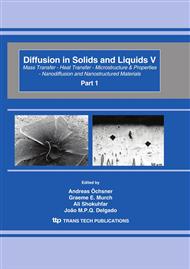p.996
p.1002
p.1010
p.1016
p.1022
p.1027
p.1037
p.1042
p.1048
Study on Collapse-Shrinkage Characteristics in Plantation-Grown Eucalyptus Wood under Continuous and Intermittent Drying Regimes
Abstract:
Collapse-type shrinkage is the greatest obstacle to prevent planted eucalypts from being used for solid wood products. In order to make the suitable drying schedules for high effective utilization of eucalypt wood, the total shrinkage and collapse on two species of difficult-to-dry E. urophylla and E.grandis wood under continuous and intermittent drying regimes were measured. The results show that total shrinkage and collapse in both eucalypts exhibited higher values for continuous drying than intermittent drying. With increasing drying temperature, total shrinkage and collapse increase in both drying regimes, while the increasing magnitude of both parameters becomes apparently larger for continuous drying than intermittent drying regime, in particular higher temperature condition. Properly elevating drying temperature to make up for the intermittent-waiting time may be allowed for intermittent drying regime. Drying duration at each intermittent drying period has a greater effect on total shrinkage and collapse of eucalypt wood. When more than a drying duration of 6 hours at an intermittent drying period is used, the differences in shrinkage and collapse between both drying regimes are very slight. Intermittent duration at an intermittent drying period has a comparatively larger effect on total shrinkage and collapse. Accordingly, we may draw a conclusion that intermittent drying regime is very likely to be a potential drying one suitable for collapse-prone lower-density plantation-grown eucalypt wood.
Info:
Periodical:
Pages:
1022-1026
Citation:
Online since:
April 2010
Authors:
Price:
Сopyright:
© 2010 Trans Tech Publications Ltd. All Rights Reserved
Share:
Citation:


